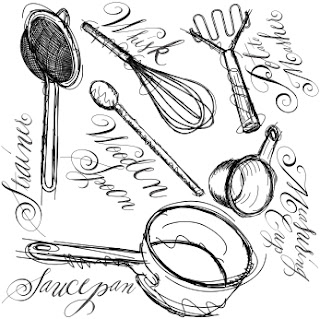So, not to worry, your help has arrived. These pastry chef tips, courtesy of Williams-Sonoma, will answer some of your most pressing baking questions and put you on the road to baking rockstardom!
Now....start your ovens and, of course, Happy Eating!
Pastry Chef's Baking Tips
- If you are unable to find cake flour, you can substitute all-purpose flour. It is heavier, however, so you need to adjust the amount. Use 3/4 cup sifted all-purpose flour plus 2 tbsp. cornstarch for every 1 cup cake flour.
- To test if butter is at room temperature, lightly press on it with a clean fingertip. If it leaves an imprint, the butter is ready to use.
- If you are unsure about the freshness of your eggs, put them in a bowl of cold water. If the eggs sink to the bottom and lie on their sides, they are fresh. If they float or stand on one end, the eggs are at their prime.
- To bring cold eggs up to room temperature quickly, put whole eggs in a bowl of lukewarm water (hot water might cook them) for 30 minutes.
- If tiny egg shell fragments fall into the bowl of egg whites or yolks, use an emptied shell to scoop up the fragments, which will readily cling to the shell. This technique is more effective than using your fingers or a spoon or knife tip.
- Salt helps to bring out the flavors in sweet baked goods.
- Cream of tartar is used in angel food cakes primarily to stabilize the egg whites, but it also lowers the pH of the batter, resulting in a whiter crumb.
- A dark pan absorbs heat more readily than a light-colored one and can cause delicate cakes to overbrown. If using a dark pan, watch the cake closely as it bakes. You may need to reduce the oven temperature or shorten the baking time.
- Don't open the oven door during the first 15 minutes of baking any cake. Changes in the air pressure or temperature can prevent the cake from rising properly.
- If the parchment paper used to line the pan sticks to the bottom of the cake, dip a pastry brush in warm water and lightly brush the paper. The water should loosen it, making it easier to remove without damaging the cake.
- To protect the top of a cheesecake when covering it for chilling, invert a large plate over the top of the pan before wrapping in plastic wrap.

No comments
Post a Comment